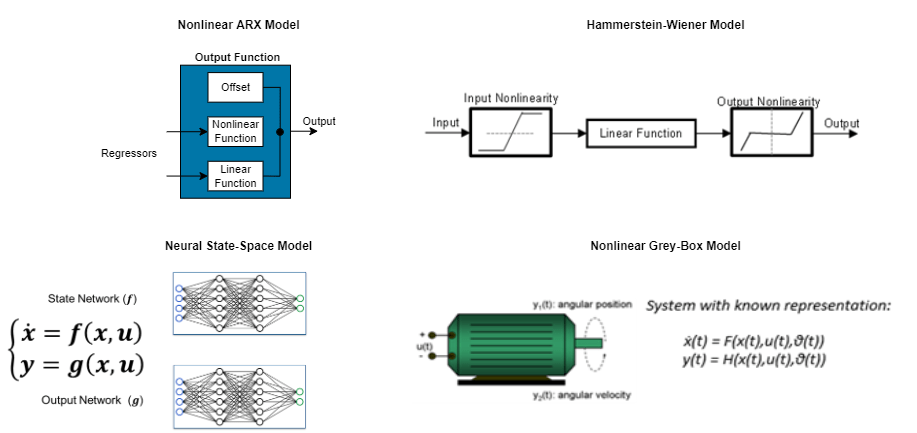非线性模型辨识基础知识
非线性辨识模型、黑盒建模和正则化
当线性模型不能完全捕获系统动态特性时,可使用非线性模型辨识。您可以在系统辨识或命令行中辨识非线性模型。System Identification Toolbox™ 可用于创建和估计四种非线性模型结构:
非线性 ARX 模型 - 使用动态非线性映射对象(例如小波网络、树分区和 S 型网络)表示系统的非线性。
汉默斯坦-维纳模型 - 估计原本是线性系统的静态非线性。
非线性灰盒模型 - 使用具有未知参数的常微分方程或差分方程 (ODE) 表示非线性系统。
神经状态空间模型 - 使用神经网络来表示定义系统非线性状态空间实现的函数。
主题
非线性辨识模型
- About Identified Nonlinear Models
Dynamic models in System Identification Toolbox software are mathematical relationships between the inputs u(t) and outputs y(t) of a system. - Nonlinear Model Structures
Construct model objects for nonlinear model structures, access model properties. - Available Nonlinear Models
The System Identification Toolbox software provides four types of nonlinear model structures: - Black-Box Modeling
Black-box modeling is useful when your primary interest is in fitting the data regardless of a particular mathematical structure of the model. - Types of Model Objects
Model object types include numeric models, for representing systems with fixed coefficients, and generalized models for systems with tunable or uncertain coefficients.
模型估计
- Identify Nonlinear Black-Box Models Using System Identification App
Identify nonlinear black-box models from single-input/single-output (SISO) data using the System Identification app. - Modeling Multiple-Output Systems
Use a multiple-output modeling technique that suits the complexity and internal input-output coupling of your system. - Preparing Data for Nonlinear Identification
Estimating nonlinear ARX and Hammerstein-Wiener models requires uniformly sampled time-domain data. - Loss Function and Model Quality Metrics
Configure the loss function that is minimized during parameter estimation. After estimation, use model quality metrics to assess the quality of identified models. - Regularized Estimates of Model Parameters
Regularization is the technique for specifying constraints on the flexibility of a model, thereby reducing uncertainty in the estimated parameter values. - Estimation Report
The estimation report contains information about the results and options used for a model estimation. - Next Steps After Getting an Accurate Model
How you can work with identified models.
